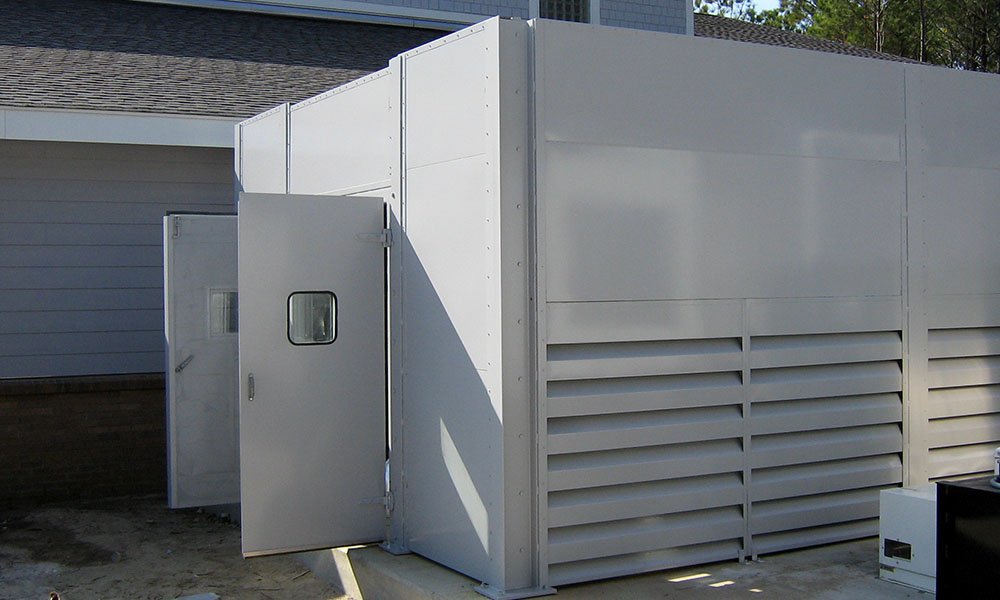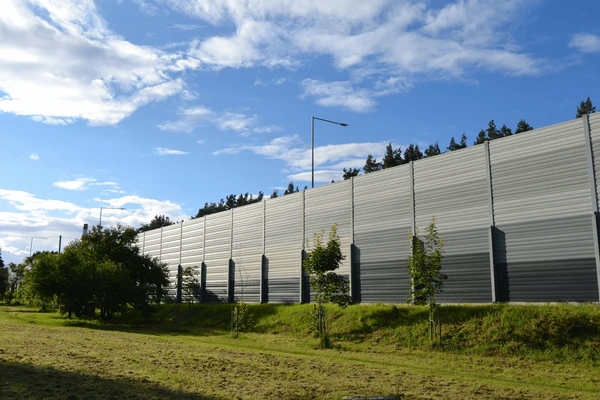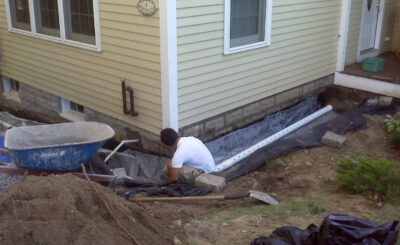Tired of all the noise at construction sites? You’re not alone. Many wonder if those big walls they put up actually do anything. Let’s chat about construction sound barriers and if they’re worth the fuss.
Construction sound barrier can cut noise by 3-7 decibels in their shadow zone. That’s like turning down your telly a notch or two. Not bad, but not amazing either.
These barriers work best when they’re tall, long, and close to the noise source.
But are they worth the money? It depends. In cities with tall buildings, they’re not as good value. And they need looking after to keep working well.
If you’re curious about other options, there are cost-effective solutions like portable barriers made of fibreglass or foam. These can be stuck on fences or scaffolding to help keep the peace.
Efficacy of Construction Sound Barriers
Construction sound barriers can significantly reduce noise levels on job sites. They work by blocking and absorbing sound waves, making the area around construction zones quieter.
Acoustic Principles and Sound Attenuation
Sound barriers use clever tricks to stop noise. They’re made of special materials that reflect sound waves back to where they came from. This means less noise escapes the construction site.
Some barriers even soak up sound like a sponge. They’re built with stuff that traps sound waves inside, turning them into tiny bits of heat energy.
The shape of the barrier matters too. Taller barriers work better because sound has to travel further to get over them. Angled barriers can send noise upwards instead of towards nearby buildings.
You’ll often see barriers made of concrete, wood, or metal. Each material has its own way of dealing with sound. Some are great at blocking low rumbles, while others tackle high-pitched noises better.
Case Studies and Real-World Performance
Real-life examples show how well these barriers actually work. In Singapore, construction sound barriers have helped tackle urban noise challenges. They’ve made life more peaceful for people living near busy building sites.
One project used stacked barriers to cut noise from a major road. The result? A much quieter neighbourhood and happier residents.
Another case saw a high-rise being built next to a school. By using portable sound barriers, they kept the noise down so classes weren’t disturbed.
Measurements taken before and after installing barriers often show impressive drops in decibel levels. Some studies have recorded reductions of up to 20 decibels – that’s like turning a loud washing machine into a quiet conversation.
But it’s not just about numbers. Surveys show that people feel less stressed and sleep better when effective sound barriers are in place near construction sites.
Cost Analysis
Construction sound barriers involve various expenses and potential savings. Let’s examine the financial aspects to determine if they’re worth the investment.
Materials and Design Factors
The cost of sound barriers depends on several factors. Material choice plays a big role. Concrete barriers are durable but pricey, while wood is cheaper but needs more upkeep.
Height and length affect price too. Taller barriers block more noise but cost more. The same goes for longer ones.
Design complexity matters. Simple walls are cheaper than fancy ones with curves or patterns. Don’t forget about installation costs. You’ll need to pay for labour and equipment to set up your barrier.
Long-Term Financial Benefits
While the upfront costs might seem high, sound barriers can save you money over time.
They can boost property values in noisy areas. People are willing to pay more for quieter homes.
Sound barriers can cut energy costs too. They act as insulators, keeping heat in during winter and out in summer.
You might avoid legal troubles. Noise complaints can lead to fines or lawsuits, which sound barriers can help prevent.
Some areas offer tax breaks for noise reduction measures. Check if your local council has such schemes.
Alternative Noise Reduction Strategies
Sound barriers aren’t the only way to tackle construction noise. There are other clever tricks that can help keep things quiet. Let’s look at some other options and how well they work.
Comparative Effectiveness
Well-designed barriers can cut noise by 10-15 decibels. But how do other methods stack up?
White noise machines can mask annoying sounds, making them less noticeable. They’re cheap and easy to use, but they don’t actually reduce noise levels.
Noise-cancelling headphones work wonders for individuals. They can block out up to 20 decibels of low-frequency noise. But they’re not practical for entire neighbourhoods.
Soundproofing buildings is very effective. It can reduce noise by 30-50 decibels. But it’s expensive and not always possible for existing structures.









